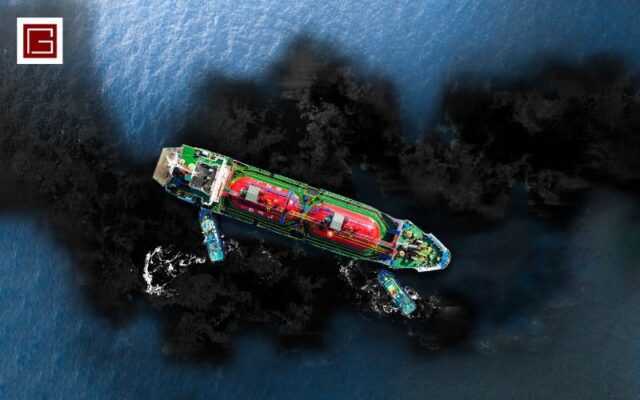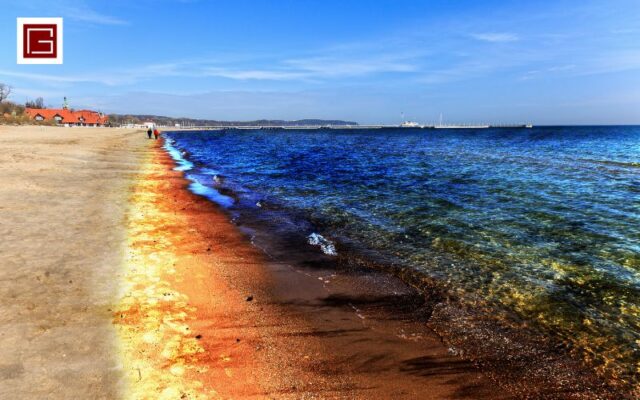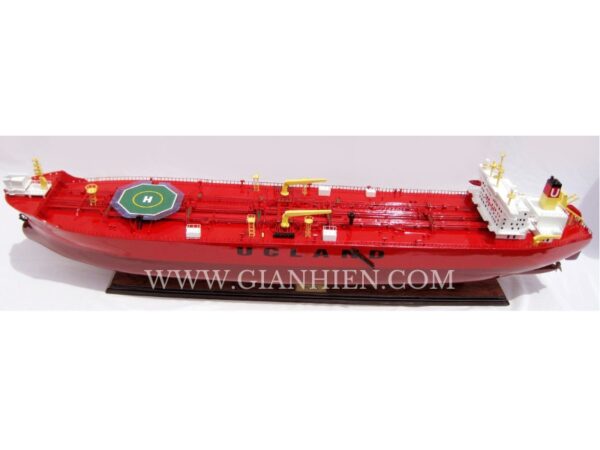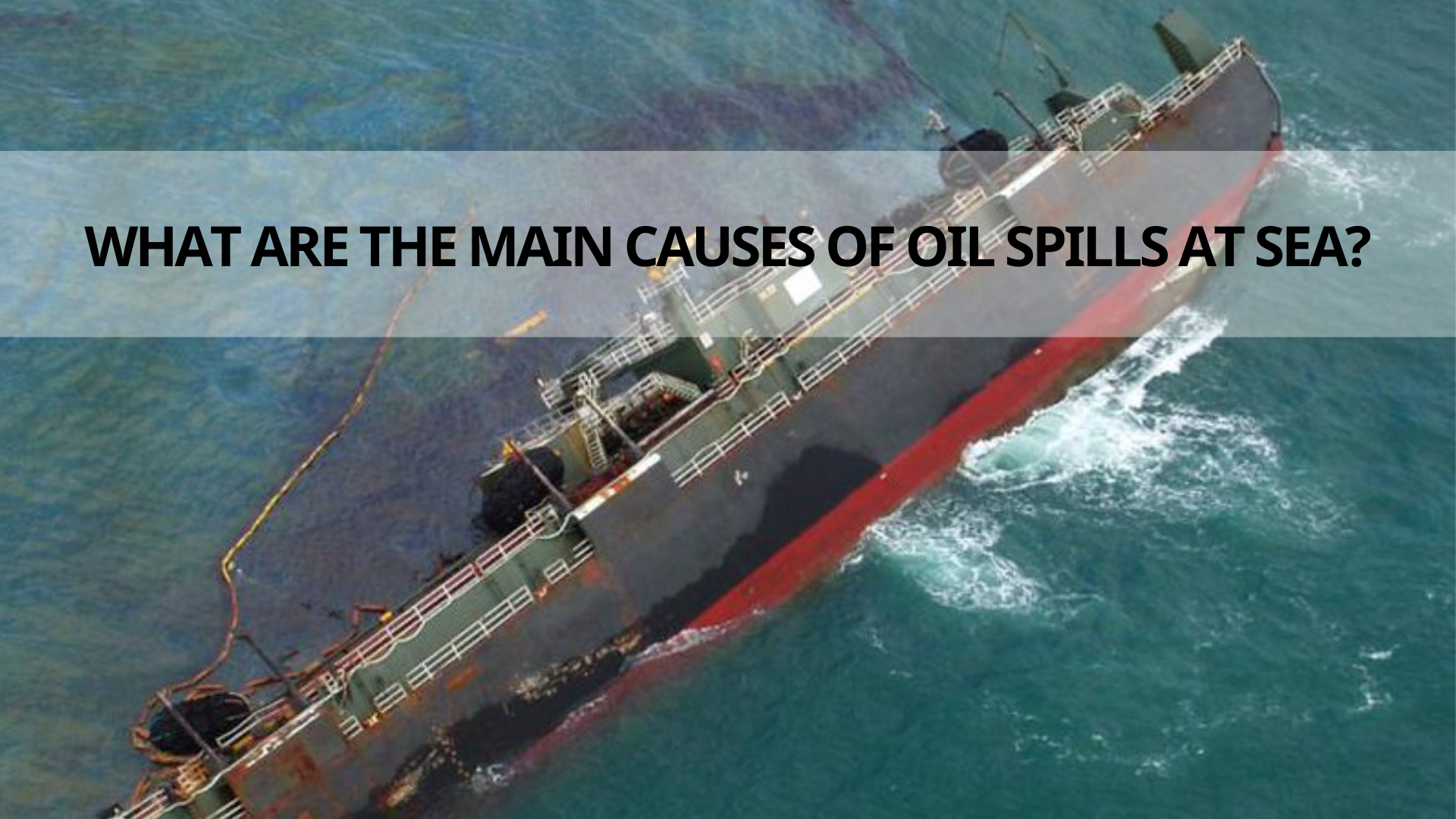BLog New
What Are the Main Causes of Oil Spills at Sea?
CONTENTS
- 1 Oil Spills at Sea: Causes and Lessons from Major Maritime Incidents
- 2 Causes of Oil Spills at Sea
- 3 Notable Maritime Incidents Involving Commercial Ships, Oil Tankers, and Bulk Carriers
- 4 The Consequences of Oil Spills at Sea
- 5 Lessons from Major Maritime Disasters
- 6 Conclusion
- 7 Gia Nhien – Trusted Provider of Maritime Ship Models
Oil Spills at Sea: Causes and Lessons from Major Maritime Incidents
Oil spills at sea not only cause significant economic losses but also have devastating effects on the environment and marine ecosystems. These incidents are often triggered by operational errors, harsh weather conditions, and even technical failures. In this article, we will explore the causes of oil spills and examine notable maritime disasters such as the Exxon Valdez, Ever Given, and MV Derbyshire, to draw valuable lessons for the maritime industry.
Causes of Oil Spills at Sea
Human Error
Many oil spills occur due to operational mistakes made by crew members or a lack of experience. For example, misdirected navigation or failure to follow proper procedures can result in collisions and oil leaks.
Harsh Weather Conditions
Large waves, storms, and thick fog can complicate vessel navigation, increasing the risk of collisions and oil spills. Severe weather can often catch crews off guard, leading to accidents that otherwise might have been avoided.
Technical Failures
Issues such as engine failure, hull breaches, or malfunctions in the oil pumping systems can lead to disastrous oil spills. These failures may occur unexpectedly and require immediate action to mitigate the damage.
Collisions or Groundings
When oil tankers collide with other vessels or run aground in sensitive areas like canals or regions with underwater rocks, oil may leak into the sea. These accidents are particularly hazardous in areas with heavy maritime traffic or restricted navigation routes.
Lack of Maintenance and Inspections
Vessels that are not regularly inspected and maintained are at higher risk of failure, especially older ships or those operating in harsh conditions. Regular maintenance is critical to ensuring the integrity of vessels and preventing catastrophic accidents.

Notable Maritime Incidents Involving Commercial Ships, Oil Tankers, and Bulk Carriers
-
Exxon Valdez Oil Spill Disaster (1989)
-
The oil spill from the Exxon Valdez is one of the most significant environmental disasters in maritime history. The ship struck a coral reef in Prince William Sound, Alaska, releasing over 41 million liters of crude oil into the sea.
-
Cause: Errors made by the captain and lack of vigilance by the operating crew.
-
Consequences: Thousands of marine animals died, and the local ecosystem was affected for many years.
-
Lesson: Following this disaster, international regulations regarding vessel operation and maritime safety were tightened. Monitoring systems and crew training were also significantly improved.
-
-
Ever Given Ship Stuck in the Suez Canal (2021)
The Ever Given incident, where the ship became stuck in the Suez Canal, paralyzed global trade for almost a week. This has become one of the most famous incidents in recent commercial transportation history.-
Cause: Strong winds and navigational errors caused the ship to become lodged, blocking the path of hundreds of other vessels.
-
Consequences: Estimated damages reached billions of dollars due to supply chain disruptions, with ships forced to reroute around Africa.
-
Lesson: This incident highlighted the importance of key trade routes and the need for contingency plans when vital canals are blocked.
-
-
MV Derbyshire Bulk Carrier Sinking (1980)
The MV Derbyshire, a massive bulk carrier transporting iron ore from Canada to Japan, sank in a major storm in the Pacific Ocean in 1980, resulting in the loss of all 44 crew members.-
Cause: Initially, the cause was unclear, but subsequent investigations revealed that the hull of the vessel was weak and could not withstand the pressure of large waves.
-
Consequences: This became the largest bulk carrier sinking in British history, sending shockwaves through the maritime industry.
-
Lesson: This tragedy raised concerns about the safety of bulk carriers and led to stronger regulations for vessel inspections and maintenance before operation.
-
The Consequences of Oil Spills at Sea
Oil spills at sea leave serious and long-lasting impacts on the environment, economy, and human communities. When oil spreads across the surface of the sea, it forms a thick layer that obstructs gas exchange, depleting oxygen and causing marine life such as fish, shrimp, and coral to die off. Seabirds and marine mammals like seals and whales are often covered in oil, affecting their ability to maintain warmth and hunt for food, leading to a decrease in population numbers.

From an economic perspective, activities such as fishing and tourism are often disrupted due to marine pollution. The cost of responding to oil spills and cleaning up affected areas is extremely high and can take years to fully address. Additionally, oil spills often have health impacts on local communities, leading to skin conditions and respiratory illnesses caused by direct contact with oil or exposure to polluted air.
These severe consequences highlight the importance of prevention and rapid response in the event of a spill, in order to minimize damage to both ecosystems and human communities.
Lessons from Major Maritime Disasters
Risk management and crew training
Incidents like the Exxon Valdez highlight the critical importance of proper crew training and strict operational oversight. A well-trained crew is essential for preventing human error and ensuring the safe operation of vessels.
Regular vessel maintenance
The sinking of the MV Derbyshire serves as a stark reminder of the need for periodic inspection and maintenance to avoid accidents resulting from structural failures or technical malfunctions.
Importance of technology and early warning systems
Implementing advanced technologies such as radar systems and automated navigation tools can help reduce the risk of maritime accidents by improving situational awareness and response times.
Contingency planning
The Ever Given incident underscores the importance of having robust contingency plans in place to minimize supply chain disruptions in the event of major navigation blockages.
Conclusion
Oil spills and serious maritime accidents not only result in substantial economic losses, but also pose significant threats to the environment and human lives. Lessons learned from disasters such as the Exxon Valdez, Ever Given, and MV Derbyshire serve as vital reminders for the maritime industry to prioritize safety, maintenance, and risk management.
Understanding the causes and consequences of these incidents allows us to identify solutions that will enhance the maritime system, ensuring greater safety for both vessels and marine environments in the future.
Gia Nhien – Trusted Provider of Maritime Ship Models
If you’re passionate about collecting ship models or want to recreate iconic vessels such as commercial liners, oil tankers, or bulk carriers, Gia Nhien is your ideal choice. With a strong reputation for craftsmanship and authenticity, Gia Nhien offers high-quality maritime models for enthusiasts and professionals alike.

We hope this article has satisfied your curiosity about the fascinating world of ships. If you’re inspired by these engineering marvels and want to bring a piece of that maritime magic into your own space, don’t hesitate to visit the Gia Nhien showroom. With a collection of over 1,000 handcrafted wooden ship and boat models, each piece is meticulously made from natural wood by skilled artisans, capturing the elegance, detail, and heritage of real vessels.
These exquisite models are not only a celebration of fine craftsmanship but also the perfect addition to elevate your home or office decor with a touch of nautical charm.
👉 Explore the full collection of model ships here: https://woodenmodelships.net/shop/
And don’t forget to follow the Gia Nhien Wooden Ship Models Blog for more captivating stories and knowledge from the maritime world!

